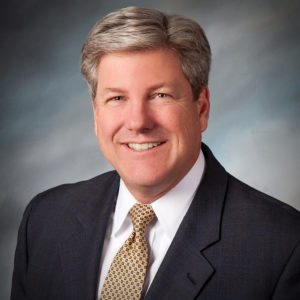By Knut A. Rostad
Originally published on RIABiz on January 7, 2017
Where RIABiz’s view of RIAs as oases-of-ethics bumps up against the Merrill Lynch & Co. mirage — and why that mirage is still so effective.
In his series “Free to Choose,” famed economist Milton Friedman rings a familiar libertarian note when he writes that consumers are “protected by the market itself. They want the best possible products at the lowest price. And the self-interest of the producer leads him to provide those products to keep customers satisfied. After all if they bring goods of low quality here you are not going to keep coming back to buy them.”
The Godfather of monetarism and Nobel Laureate’s message rings loudly at the dawn of the era of Trumponomics, but not so loudly as to drown out the future of RIAs.
Indeed, in a recent opinion piece for RIABiz, editor-in-chief Brooke Southall argued that RIAs, with a service superior to and more ethically sound than their Wall Street competitors, can fall to only one enemy — themselves — if they fail to clearly explain — actually, to show and tell — their value proposition to prospective clients. See: Why 2017 dawns brightly for RIAs, an oasis of unflinching ethics in an ethics-optional atmosphere,
Brooke’s rationale is simple. The RIA mousetrap is superior. Better yet, investors today get, as they have never gotten before, why the RIA mousetrap beats the competition. Paralleling lessons learned from the election, he suggests RIAs can only mess it up if they “tread the forlorn path of the 17 failed Republican primary contenders and one Hillary Clinton – namely by doing a crappy job of explaining what the challenge is and why RIAs have the best solution.”
Bottom line: Irrespective of what Trump policies mean the for future of the DOL rule, RIAs largely control their own destiny. See: Dale Brown tells RIAs why SEC’s fiduciary standard is too costly for their clients. RIAs must chuck the conventional sales playbook, chuck the awful jargon permeating RIA talk, and start afresh. If they don’t, Brooke’s bright 2017 will be in a fog in January 2018.
We’re all ‘best interest’ brokers now
Merrill Lynch, J.P. Morgan and their like won’t make it easy. They are, of course, not failed contenders. They are fierce and successful competitors that will not quietly drop out of the race. They present a greater threat to RIAs than did any of the 17 Republicans to the current president elect. That’s because wirehouses have advanced a “uniform standard” — without any accompanying regulatory action — and have, once again, successfully muddied the water.
Take Merrill Lynch — it’s foray into the new DOL rule-branding world is nothing if not brilliant. According to a Merrill Lynch ad, its brokers are essentially just like RIAs, regardless of whether they’re advising on a retirement account or recommending a product for a non-retirement account. See: Using DOL as cover, Bank of America cuts the Merrill Lynch bull as it adds a robo, stops paying brokers to stick around and kicks John Thiel upstairs.
Further, in the environment of uncertainty surrounding the status of the DOL rule and what BICE means, other industry voices, bolstered by healthy ad budgets, will loudly parallel Merrill Lynch’s messaging. They’ll suggest: DOL rule or no DOL rule, BICE or no BICE, policies and procedures and a credible enforcement mechanism or not, it doesn’t really matter. All brokers are “best interest” brokers, now. After all, the rationale goes, huge investments of time and money have been made to become DOL-compliant and we can’t go back, now. See: Jaws drop after Dale Brown Skypes keynote address to Laser App conference with the claim: ‘We were fiduciary believers long before being a fiduciary was cool’.
The challenge of re-differentiation
This is what Schwab CEO Walt Bettinger may have been thinking at IMPACT last October when he urged RIAs to “re-differentiate” from those “wanting to look and act and to appear” to be RIAs. See: As Bernie Clark and Walt Bettinger go on offense, LPL and Wells Fargo names get named and a B2C robo dry-up gets foretold at Schwab IMPACT in San Diego.
Re-differentiating means explaining the better mousetrap in plain language and in a straightforward way that resonates with ordinary investors. This means RIAs must explain clearly and publicly what they do. They must say and do what fiduciaries do.
But, as important, RIAs must also say what non-fiduciaries don’t, won’t or can’t do. They must highlight tasks that, in fact, many non-fiduciary firms won’t let their brokers perform. See: FINRA shifts an unwelcome spotlight away from itself — by training it on the brokers it oversees
The Institute for the Fiduciary Standard’s Best Practices are crafted, in part, to assist advisors in re-differentiating their services from those of faux-fiduciary wirehouses.
In black and white
What are some examples of tasks that can re-differentiate fiduciaries from non-fiduciaries — tasks that ordinary investors consider important?
- Put in writing that fiduciary duties apply always and with all clients.
- Put in writing your agreements and conflicts of interest; give these documents to clients.
- Report to clients their fees and investment expenses.
- Zealously avoid conflicts.
- More zealously mitigate unavoidable conflicts to satisfy the most skeptical and best informed clients.
In 2017 and the new era of Trumponomics, RIAs may well adopt Friedman’s rallying cry when speaking to investors: “Free to choose!”

